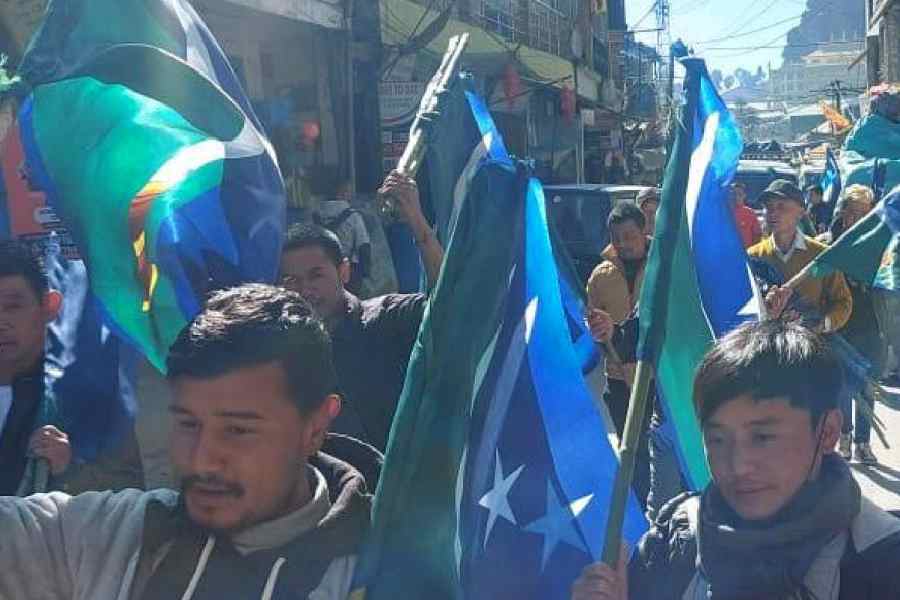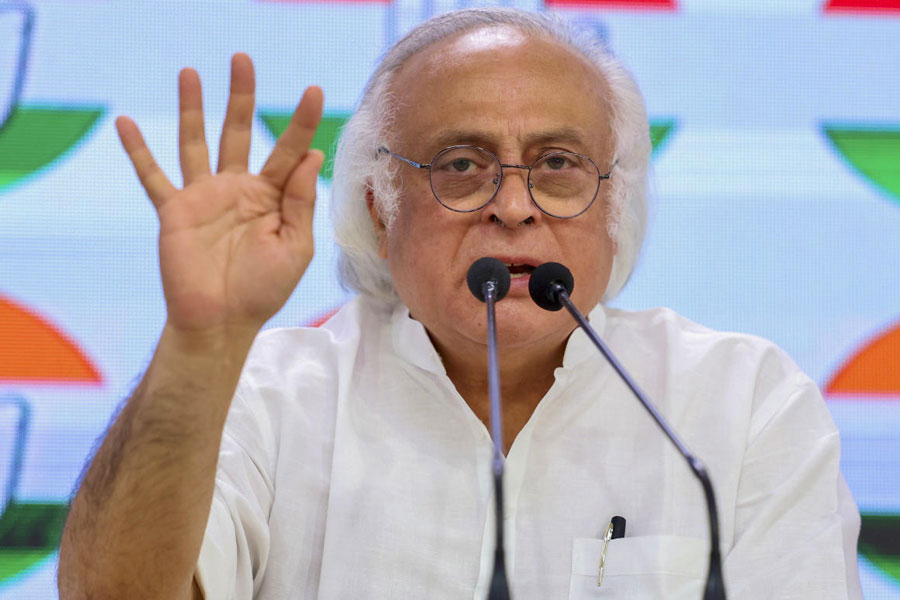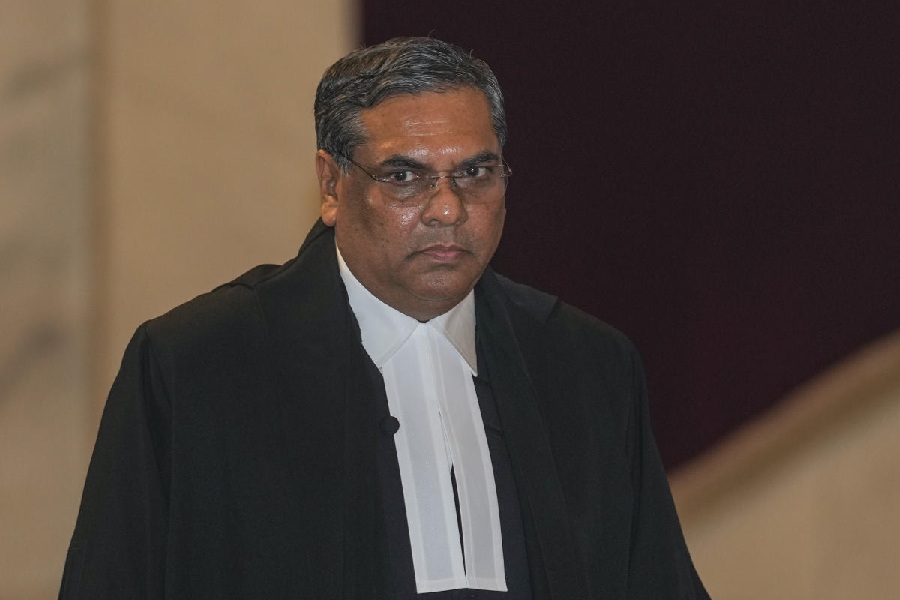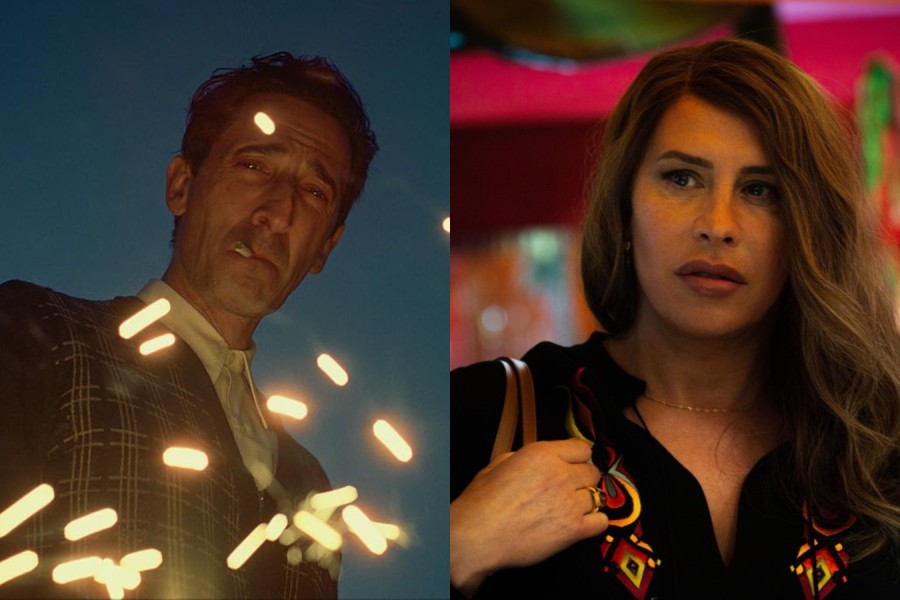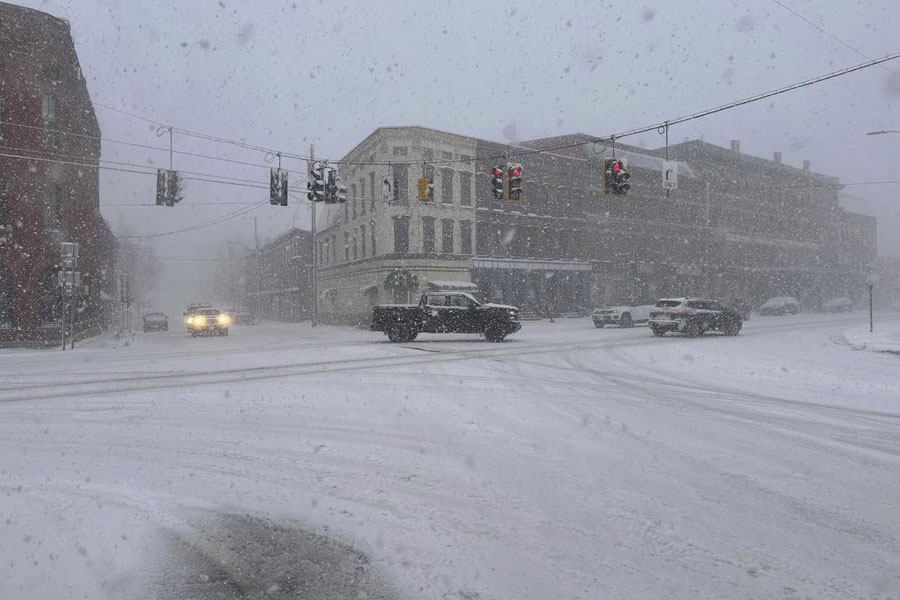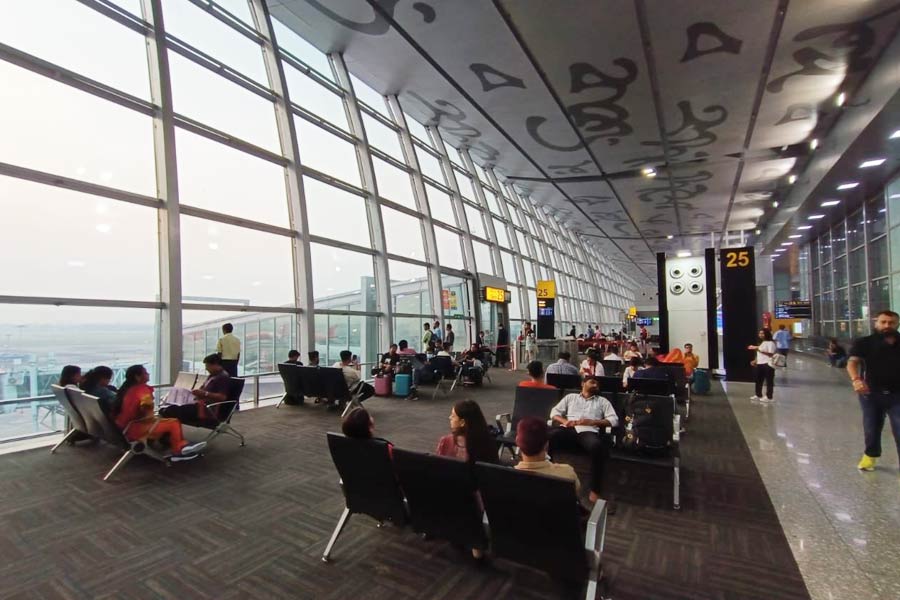The politics of flags is flying high in the Darjeeling hills.
The newly formed Indian Gorkha Janshakti Front (IGJF) has started planting the party’s flags in different parts of the hills.
“We are covering one area at a time. However, our initiative seems to be ruffling our rivals’ feathers as our flags were uprooted in Mirik,” said an IGJF leader.
The IGJF flag that bears a star and a khukuri is a rectangle divided by green and blue triangles.
The IGJF was formed on December 22 with Ajoy Edwards, former president of the Hamro Party and an elected member of the current Gorkhaland Territorial Administration (GTA) Sabha, being nominated as the chief convener.
The nascent party started the flag campaign almost immediately after its formation. “The presence of flags seems to give a sense of spatial dominance,” said a hill resident.
Many have observed that leaders of other political parties have also started planting their party’s flags, especially in rural areas, of late.
“This form of political advertisement seems to connect with the common people psychologically,” said a political observer.
During the heyday of the Gorkha National Liberation Front (GNLF) in the mid-80s, local leaders would give a call to the common people to erect party flags on the rooftops of their residences to show their allegiance to the organisation.
“That move had a huge impact on members of rival parties,” recalled a former GNLF leader.
In 2007, a travel agent from Darjeeling flew the GNLF flag on Mount Everest. The move was not politically motivated.
“We decided to take the flag to Everest as it represents the aspiration of the hill people. An aspiration to make Darjeeling a better place and also because most of the hill people can relate to the flag,” Loben Sherpa, who had conducted the tour, had said then.
“We, however, do not have any political statements to make. We only want the world to know Darjeeling and the strong bonds it shares with Everest,” Sherpa added. Tenzing Norgay Sherpa, the first man to climb Everest was a resident of Darjeeling.
The GNLF flag was planted atop Mount Everest on May 15, 2007, by Pema Chhoti Sherpa, one of the three guides with Pasang Phutar Sherpa and Phurba Temba Sherpa. The team had two Canadian climbers, Serge Dessureault and Maurcie Beausejour.
When the GNLF was dislodged by Bimal Gurung’s Gorkha Janmukti Morcha, the new party painted the hills with its flags and buntings.
In fact, supporters of Bimal Gurung had rushed to put up party flags atop Gitangadara — the place where public meetings are held in Darjeeling town — in the morning of October 24, 2020, when Gurung had resurfaced after being on the run since 2017 “to symbolise Gurung’s return”.
Gurung had first surfaced in Calcutta on October 21 and joined hands with the TMC after dumping its decade-old ally, the BJP.
Recently, the GNLF had also started a campaign to put up black flags across the Darjeeling hills to protest the BJP’s delay in “delivering justice” to the hill people.
The BJP has promised a permanent political solution for the region apart from granting tribal status to 11 communities of the Gorkhas.

